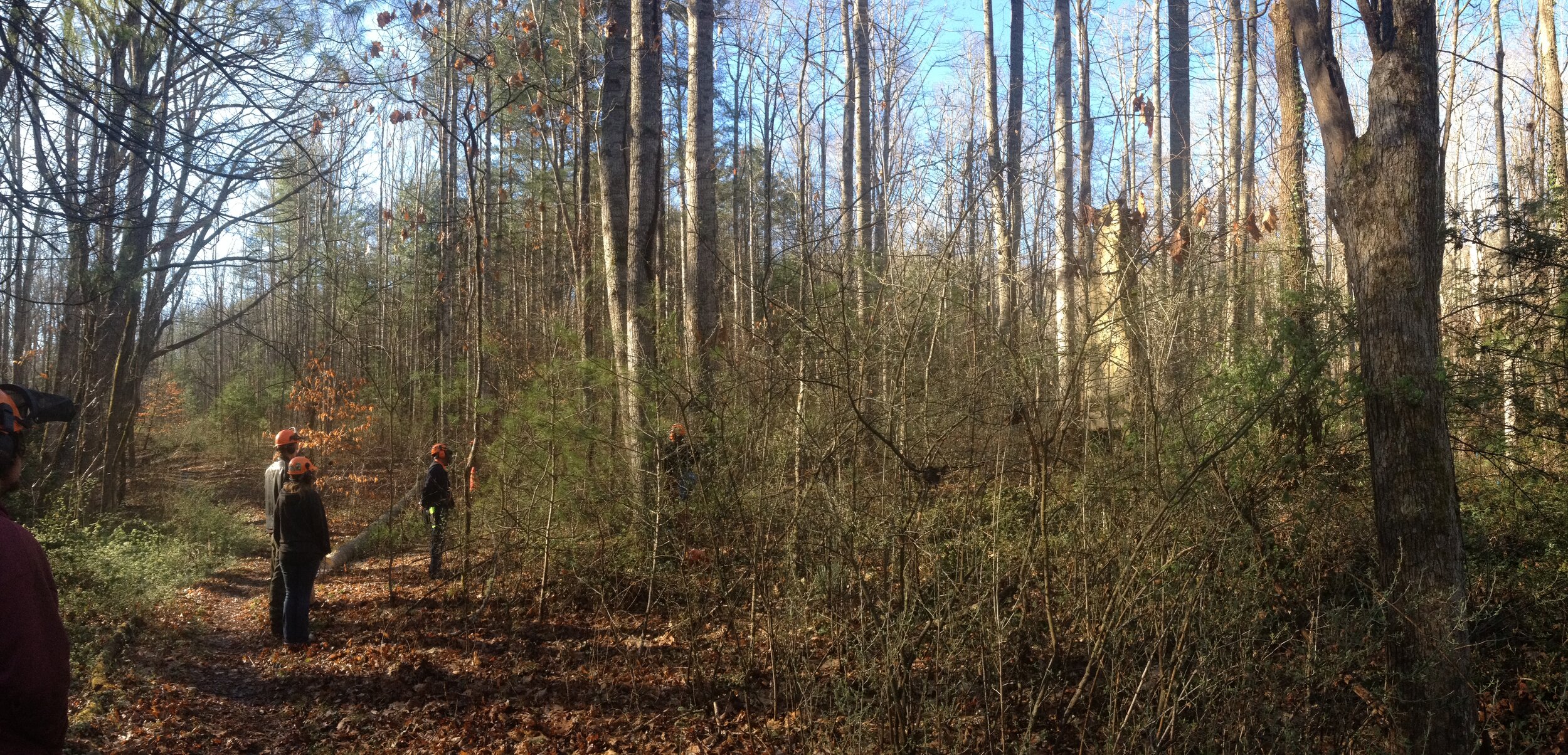
Funding Forest Management
Some forests in Sandy Mush have been harvested using unsustainable practices (e.g. high-grading) and require some degree of forest restoration to promote their development into high value timber stands. However, costs associated with site preparation activities such as invasive species control can be a barrier to developing these forest stands. Responsible forest management, paired with connecting landowners to funding support, can be used as a tool to restore forest ecosystem productivity and meet landowner economic goals.
There are a number of cost-share, conservation incentive programs, and property tax deferral options available locally and nationally for landowners to utilize when pursuing restoration goals. Organizations such as the USDA Natural Resources Conservation Service (NRCS) have programs dedicated to funding ecological forest management.
Resources
Property tax assessments with NC Wildlife Resources Commission and the Wildlife Conservation Lands Program
More coming soon!
Looking for more?
Non-Timber Forest Products
The interest in the cultivation and management of non-timber forest products (NTFPs) is increasing throughout the Southeast. The rich, fertile soils of Appalachian coves common in Sandy Mush allow for the flourishing of many understory medicinal plants. Species such as American ginseng, black cohosh, ramps, and goldenseal are several possibilities when thinking about NTFP management.
Invasive Species Management
There are several non-native invasive plants, pests, and pathogens that can be found in abundance throughout the forests of Western North Carolina. Determining how to manage your forest in a way that mitigates the threats from these species is crucial in ensuring the longevity and resiliency of your woods.
Fire Adapted Communities
Ecologically appropriate fire is important to forest health as it can promote native fire dependent species such as shortleaf pine, and limit the number of catastrophic wildfire events by reducing fuel loading. Additionally, ensuring preparedness for wildfire events is important for community resilience.


